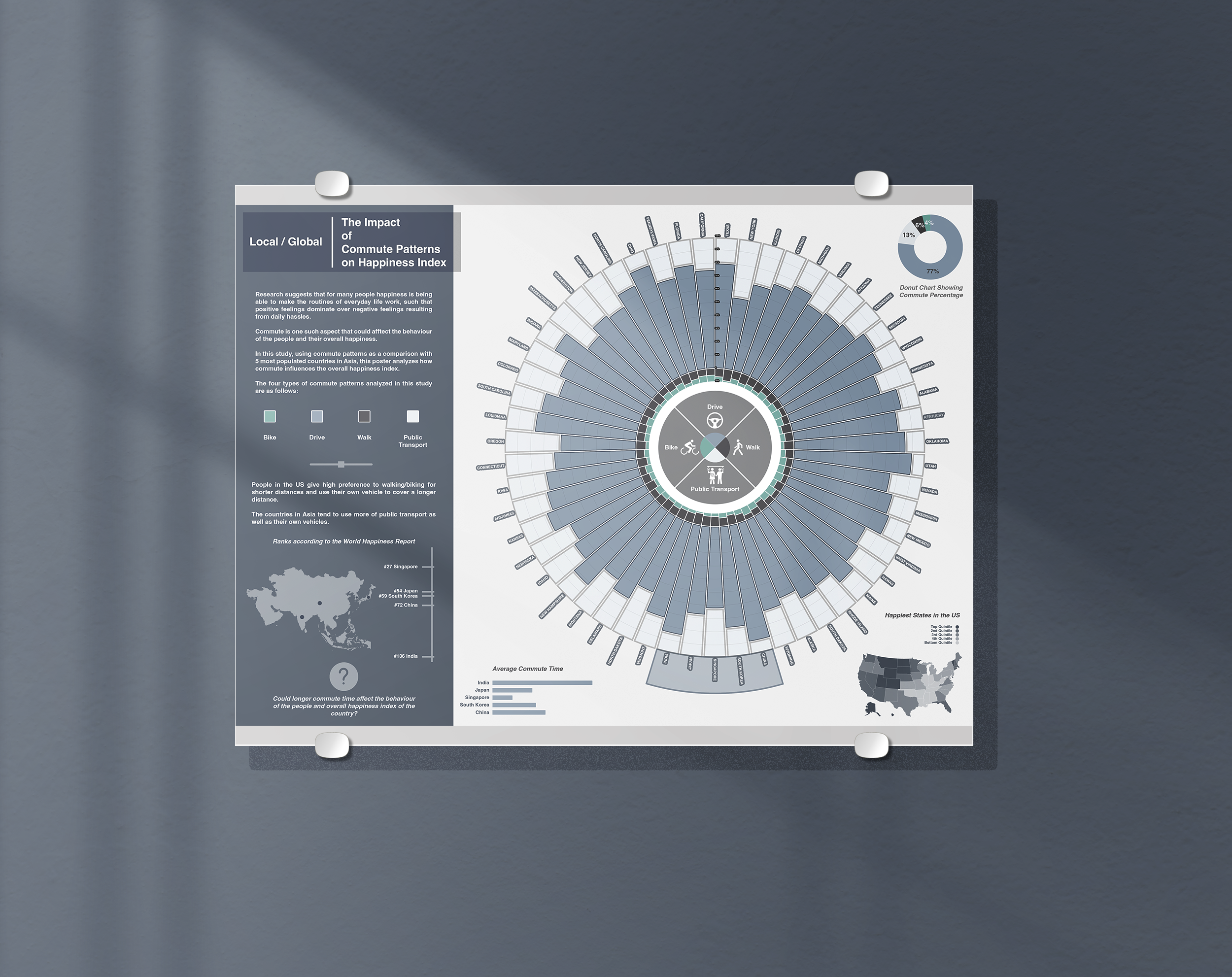In our rapidly evolving world, where daily commutes are an integral part of modern life, the
relationship between commute patterns and individual happiness has become a subject of
increasing importance. The daily journey from home to work and back is more than a mere
logistical necessity as it shapes our experiences, influences our well-being, and, in many ways,
defines the quality of our lives.
This project delves into the intricate interplay between commute patterns and the happiness index
across diverse geographic regions. Focusing on the United States and five prominent Asian
countries - India, China, South Korea, Japan, and Singapore - I aim to explore the nuances of
how different commuting experiences contribute to or detract from the overall happiness of
individuals.

This project involves a comprehensive analysis of quantitative data, including average commute
times,
transportation modes, and existing happiness indices.
In a globalized urban context, this project delves into the complex interplay of commute patterns
and happiness across diverse regions in the USA and five Asian countries. Utilizing a
comprehensive methodology encompassing data analysis and information design, the research aims
to narrate a nuanced story, providing insights for sustainable urban planning and well-being.
This project aims to gather, organize, and analyze the data to explore and compare commute
patterns across states in the USA and five Asian countries. Additionally, it examines methods
for researching, visualizing, and testing in information design, aiming to communicate complex
information to a specific audience with both editorial and visual clarity. The objective is to
identify factors influencing the relationship between commute patterns and happiness, and
provide actionable recommendations for policymakers and urban planners.
As the data facilitator in this project, I play a crucial role in crafting visualizations that go
beyond raw data. Visualizations serve as storytellers, uncovering invisible connections and
patterns. Through this process, new facts, trends, and insights emerge, contributing to a
comprehensive understanding of the correlation between commute patterns and happiness.
The project commenced by establishing a systematic content generation process, incorporating
local insights gathered through interviews and surveys. Subsequently, data analysis unfolded
with the listing, sorting, and categorization, revealing patterns and stories. The exploration
extended to identifying global data for comparisons, with a focus on narrating a story in an
infographic from a unique perspective.

